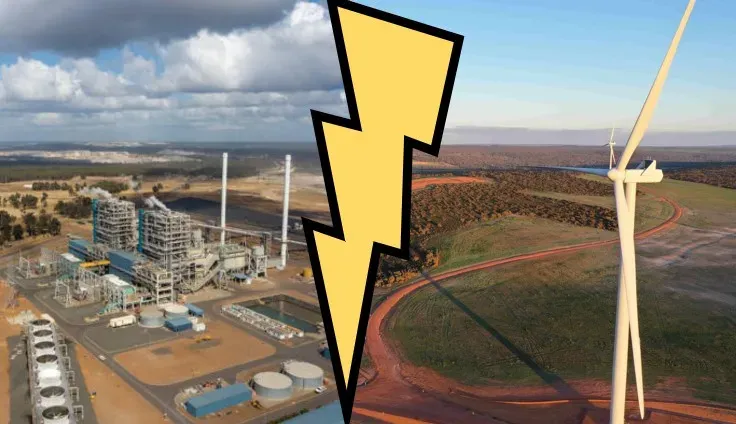Gas leftover from exports not enough for WA power and industry: AEMO
Rising gas prices resulting in job losses are inevitable unless the WA government mandates more supply from gas exporters.
Next summer the South West will have less coal-fired power available in the system but more storage from grid-scale batteries.

Hot summer nights in WA's South West helped push power demand to a record high in the March quarter when the share of power from wind and solar was more than 41 per cent.
Increased use of renewable energy and less coal-fired power cut the average carbon pollution per unit of power by five per cent, according to the Australian Energy Market Operator's Quarterly Energy Dynamics Report released on Wednesday.
Burning coal generated 28 per cent of the power consumed on the South West Interconnected System in the three months to March, down from 30 per cent a year ago.
AEMO attributed the change to state-owned Synergy's Muja C unit 6 generator only being made available when required. It was called on four times in the quarter when temperatures soared, but was retired on April 1 and will not be available next summer.
In March, Peter Kerr from energy advisory ATA Consulting said there will be a significant amount of extra battery storage on the South West grid before next summer, and if required, greater use of gas could help.
"The grand faith in solar, batteries, and gas-fired generation is potentially still skating close to the wind," he said.
Kerr said the big question for the next few years is whether the system has enough spare capacity to handle a coal-fired generator becoming unavailable earlier than planned or if demand grows more quickly than expected.
"If you had to pull an emergency lever, maybe it's more gas-fired generation capacity," he said.

More gas generation is coming, but not in time for the summer of 2025-26.
Last week, east coast energy giant AGL applied for environmental approval to add 250 megawatts of gas turbines to its existing plant in Kwinana, targeting a 2029 start-up.
In November 2024, Strike Energy committed to building an 85 megawatt gas peaking plant in the Mid West using gas from its South Erregulla field.
There is also a substantial pipeline of new grid-scale batteries under construction, with storage projects in Collie owned by Neoen and Synergy due to become operational before next summer.
An AEMO spokesman said each year, it works with industry to prepare the power system for summer's high demand and, if necessary, can run competitive tenders to procure supplementary reserves.
The system was pushed hard on January 20 when the temperature in Perth hit 43.6 degrees, when operational demand - total demand less rooftop solar - hit an all-time record of 4486 megawatts, just as solar generation disappeared in the early evening.
Earlier that day, a record total demand of 5385 megawatts was recorded.
The average wholesale energy price for the quarter was $89 a megawatt hour, up 11 per cent in 12 months. Homes and small businesses in WA are not directly affected by this price as the WA government sets their power tariff.
The hike in average price was in part caused by more gas being burned due to lower winds and hot nights pushing demand into the evening when solar is not available.
All the info and a bit of comment on WA energy, industry and climate every Friday